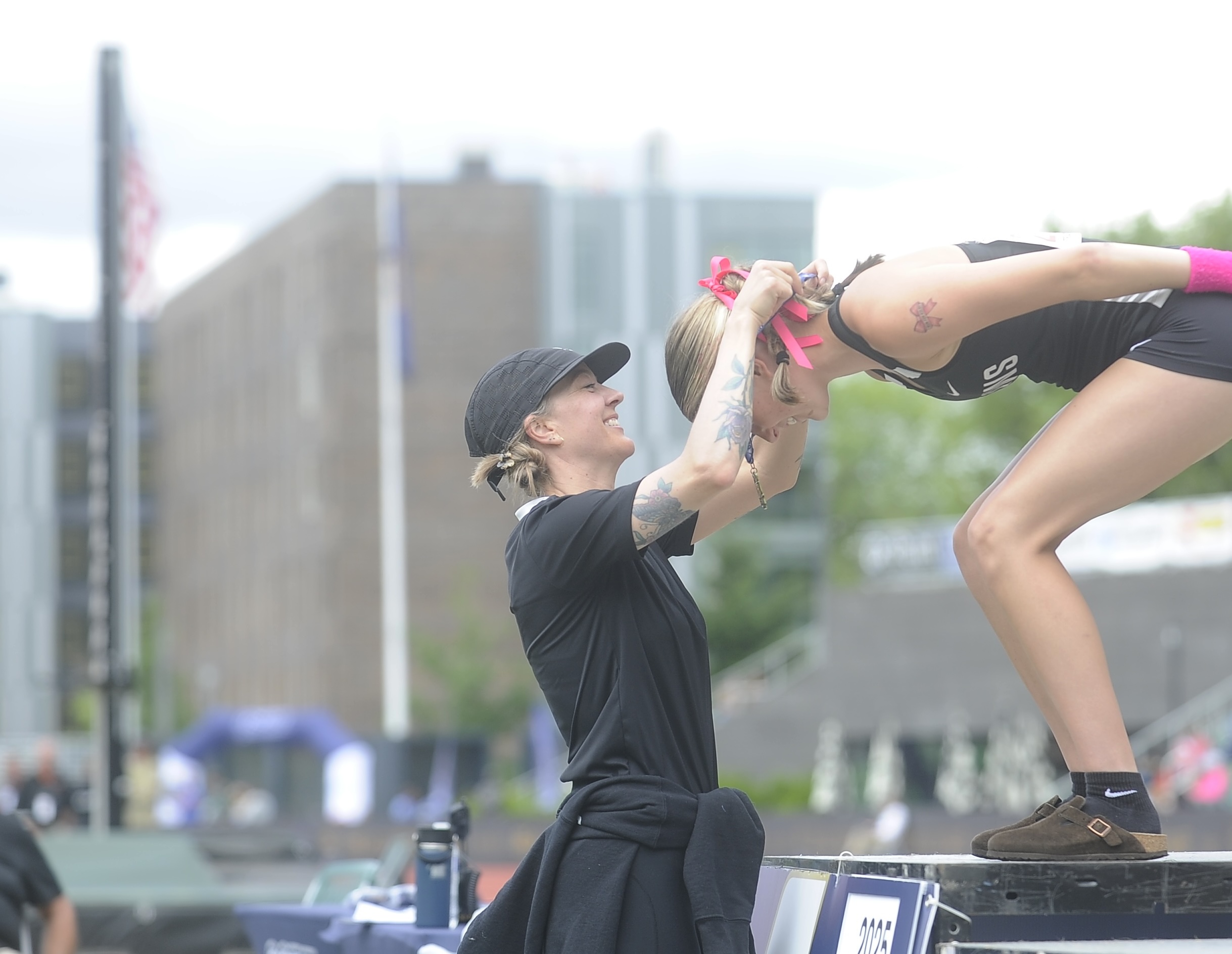‘Sleek, sexy, powerful’: Pilates with extra punch
Published 12:00 am Thursday, March 13, 2014

- Sabrina Nieves, reflected center, leads a Piloxing class at a fitness club in New York, Feb. 11, 2014. Nieves-Greenstein has helped popularize the hybrid Pilates/boxing/dancing workout regimen in New York, but many Pilates purists feel Piloxing is an insult to their more serious practice. (Karsten Moran/The New York Times)
NEW YORK — During a recent fitness class at the Flatiron branch of the New York Health & Racquet Club, 20-odd women wearing pink 1-pound weighted gloves did rounds of uppercuts, side jabs and fancy footwork before slowing down for pliés and leg lifts.
At the end, the gloves came off and the mats came out for abdominal exercises. Pop music blared throughout. To end the class, the instructor, Sabrina Nieves, asked everyone to shout the motto “Sleek, sexy, powerful.”
Welcome to Piloxing, a perhaps unlikely but increasingly popular workout class that’s part Pilates (the conditioning routine founded in the 1920s by Joseph Pilates of Germany) and part boxing, with a dash of dance.
The boxing part is apt, as anyone brazen enough to use even part of the word “Pilates” in a fitness routine that isn’t strictly derived from the teachings of the founder is setting themselves up for a tussle, or at least open sniping.
“It’s kind of an insult,” said Alycea Ungaro, the owner of Real Pilates in Tribeca, who has taught the discipline for more than 20 years. “I have no problem with people studying Piloxing if you want to be a Piloxing instructor. If that gets you out of bed in the morning, you should do that. But for people who’ve devoted themselves to the craft, to call it Pilates is a misnomer, and when Piloxing people show up at a Pilates studio, they’re confused. They have expectations that we can’t fulfill.”
Piloxing was created about five years ago by Viveca Jensen, a former jazz dancer turned Pilates instructor who moved to Los Angeles from a small town near Stockholm 21 years ago. She said she took boxing lessons to gain strength and ended up putting some moves together with Pilates because she liked the idea of mixing strength with femininity. Her creation includes leg lifts that she calls “standing Pilates” and does not use the basic (but brutal) Pilates abdominal move, “the 100s.”
‘Not just one way to train’
“In the beginning, people said, ‘Hmm, that’s not Pilates,’” Jensen said. “But I do believe that Joseph Pilates would approve. Anything that’s good is going to evolve. I want to evolve, and restrictions are only going to make restrictions in your life.”
She added: “There’s not just one way to train people.”
Indeed. Today there are 7,000 Piloxing instructors in 36 countries, all of whom have been certified through Jensen’s nine-hour course. In the United States the workout is most popular in suburban areas, although it has developed a following in Los Angeles, where actresses Emmy Rossum, Kirsten Dunst and Hilary Duff have all tried it, Jensen said.
In New York, Piloxing is taught at four branches of the Health & Racquet Club. Nieves, a former kickboxing and boot camp instructor, brought the workout to the gym chain when she moved to New York from Bergenfield, N.J.
“The market and the profession here are so much more competitive that I wanted to have another program under my belt that would set me apart,” she said. “I took a Piloxing class and was hooked.”
Conventional Pilates classes take place either on a mat or on a piece of equipment called a Reformer, using either pulleys and springs or your own body weight to create resistance. The goal is to get a solid core, lean muscles and better breathing habits. Generally, the mood is as serious as at an art-house cinema. “With strength training, I get so bored,” said Amber Gray, a photographer who lives in the Gramercy Park neighborhood and who is a regular in Nieves’ classes. “If it’s just leg lifts for an hour, I want to run out.”
Is it Pilates? That’s a ‘stretch’
Jennifer DeLuca, who owns Body Tonic, a Pilates studio in Park Slope, Brooklyn, studied with Romana Kryzanowska, a protegee of Joseph Pilates. She said she could see how Piloxing could be a good workout, but that it should not be labeled a form of Pilates.
“There’s no mind-body connection whatsoever, and Joe wouldn’t have ever wanted music,” she said. “It just looks like a very industrious lady working to make a career for herself. I’m sure what she’s doing creates really tight butts, and a lot of people want tight butts, but to call it Pilates is a stretch.” (No pun intended, surely.)
Pilates is not trademarked. In 2000, a federal court ruled that the term is generic. So anyone, trained or not, can offer the ostensibly posture-perfecting class, or combine it with another workout and give it a cutesy name.
“I didn’t want to do ‘Pilo-box’ or ‘Box-ilates,’” Jensen said of coming up with Piloxing. “I liked the ‘X’ in the middle. I thought it was kind of tough.”
Erika Bloom, the owner of Erika Bloom Pilates Plus on the Upper East Side, is more of a purist.
“I’d like people to get over this misconception that if you throw in ab exercises, you’re achieving Pilates,” she said. “Because Pilates is a full-body system. Too many people think it’s like yoga with crunches, but it’s actually about repatterning the body to build muscle in a balanced way.”
Jensen takes a less serious approach, though she insists Piloxing is Pilates.
“I’ve done Pilates for 12 years,” she said. “This is about elongation, balance and flexibility, but then we might do a little cha-cha because I want people to feel feminine and have fun. It’s not that serious. I say shake your bum bum. It’s a workout class.”






